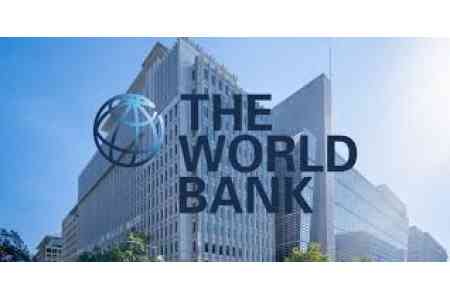


ArmInfo. Armenia's financial sector is stable due to high loan growth, a low share of non-performing loans (NPLs), and strong capital buffers. However, the high rate of loan growth and the significant share of consumer loans and mortgages indicate debt accumulation, which could become a heavy burden in the event of deteriorating financial conditions or macroeconomic stress.
The structure and growth rate of the loan portfolio signal signs of overheating that require ongoing monitoring, according to the first-ever World Bank report, "Armenia's Economic Pulse: Fairer Markets for Inclusive Growth.
" The chapter of the report devoted to the financial sector provides specific figures: "At the end of August 2025, annual loan growth was significantly higher than deposit growth - 26.6% compared to 15.8%. Moreover, both loan and deposit growth were driven by the increasing dram component in their structure. In January-August 2025, loan dollarization remained at an average of 33%, which is 8 percentage points below the 2020-2024 average. Meanwhile, deposit dollarization during the same period was higher - 47% (compared to an average of 52% in 2020-2024)."
The report notes that nearly half of this loan growth came from consumer loans and mortgages, which increased by 31% and 26.3% year-on-year, respectively. In terms of lending to economic sectors, the services and construction sectors saw particularly strong growth, rising by 40.6% and 32.8%, respectively.
The report also notes that bank profitability and capitalization have strengthened, while asset quality has remained consistently high: "In the first eight months of 2025, the share of non-performing loans in the loan portfolio was low at 1.2% (the same as in 2024 - 1.2%). Capital adequacy was at 20.3% (the same as in 2024), significantly exceeding the required regulatory minimum (11%). Asset profitability remained stable during this period."
It should be noted that according to the Financial Rating of Armenian Banks as of September 30, 2025, prepared by ArmInfo Investment Company, the share of non-performing loans (NPLs, including the bad group) in the loan portfolio increased over the year from 4.7% to 5.1%, and in assets from 3% to 3.4%. Moreover, the volume of good loans accelerated in year-on-year growth from 12% to 35%. Approximately 50% of NPLs are high-risk loan groups - doubtful and bad loans. The largest share of delinquencies continues to accumulate in consumer loans - approximately 40% of NPLs, half of which are doubtful and bad loans. However, the share of delinquencies in mortgage loans is small - 8% of NPLs. The loan portfolio accelerated in year-on-year growth from 12% to 24%, amounting to more than $21 billion. Corporate lending accounts for 53.2%, or $11.2 billion, and retail lending for 49%, or $9 billion, with annual growth accelerating from 22-23% to 26-27%. Specifically, retail lending accelerated in year-on-year growth from 23% to 27%, and corporate lending from 22% to 26%. Mortgage lending continues to grow at high double-digit rates, with a slight slowdown from 28% to 26%, reaching $4.3 billion (over 20% of the loan portfolio). The share of loan investments in the asset structure increased over the year from 63% to 67%. Return on equity (ROE) stabilized at 23%, while return on assets (ROA) stagnated at 3.7%. This was observed amidst a moderate acceleration in annual asset growth from 16% to 18%, reaching $31.3 billion, and a continued 17% increase in total capital, reaching $5.3 billion. The banking system closed the first nine months of 2025 with a net profit of $805 million, with annual growth slowing from 25% to 15%.